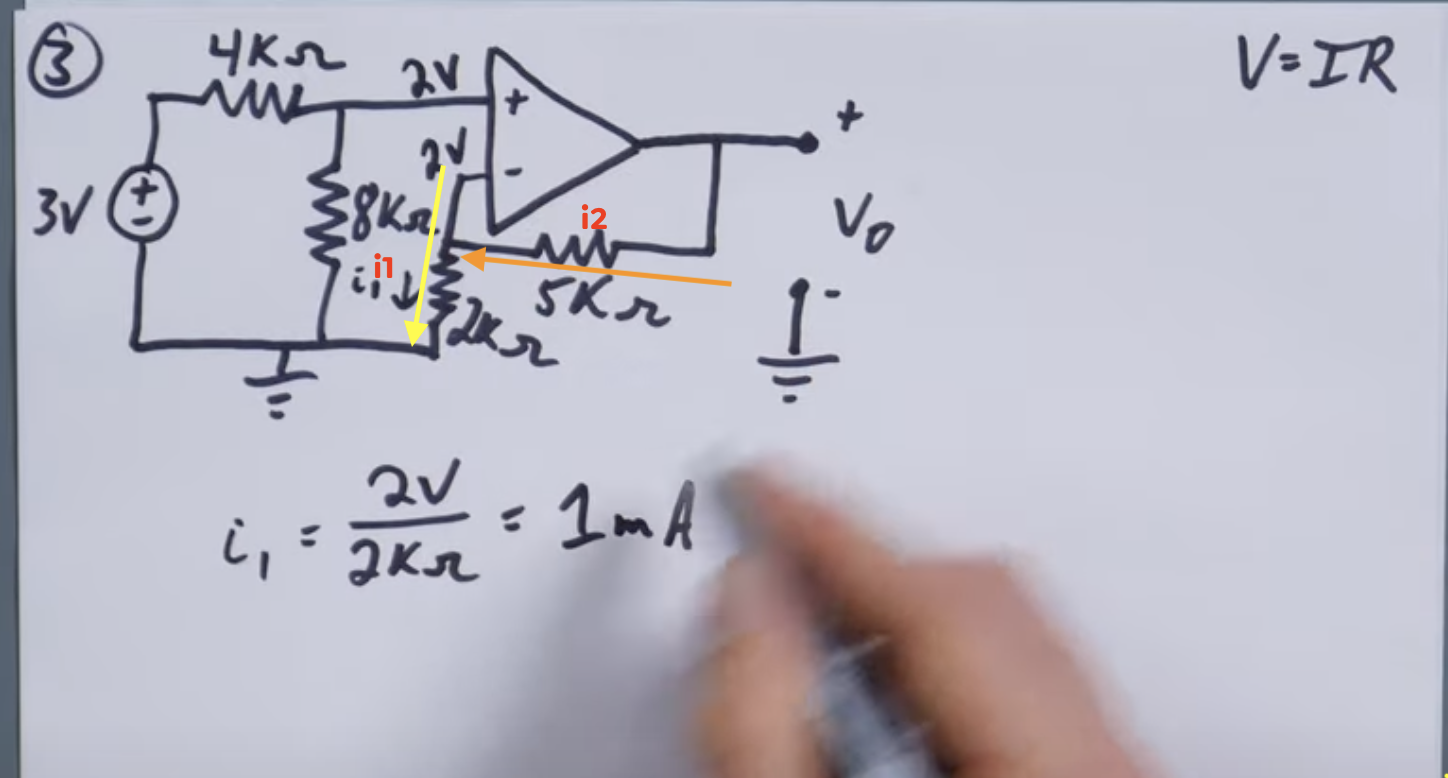I am learning about op-amps from this tutorial from Circuitbread.com on YouTube.
The instructor states around the 9:30 mark (video clip):
Because we have 1 mA (through i1) we know we have 1 mA (through i2).
How does the instructor know/assume that the current would be the same across these resistors?
When I calulate the current I get different values:
$$i_1 = \frac{2\mathrm{\ V}}{2 \mathrm{\ k\Omega}} = 1\mathrm{\ mA}\\ i_2 = \frac{2\mathrm{\ V}}{5\mathrm{\ k\Omega}} = 0.4\mathrm{\ mA}$$
Later in the video, they even show the formula:
$$\frac{v_0-2\mathrm{\ V}}{5 \mathrm{\ k\Omega}}= 1 \mathrm{\ mA}$$
Is this a mistake or am I misunderstanding something?
Update
I think I've identified my incorrect assumption. I was thinking of the current traveling through the yellow line, instead of through the orange line. If the current is traveling the orange line, it makes sense that both i1 and i2 would be seeing the same current since they are in series.




